Sennheiser Accentum TWS Review – Sound shines bright, but not the features
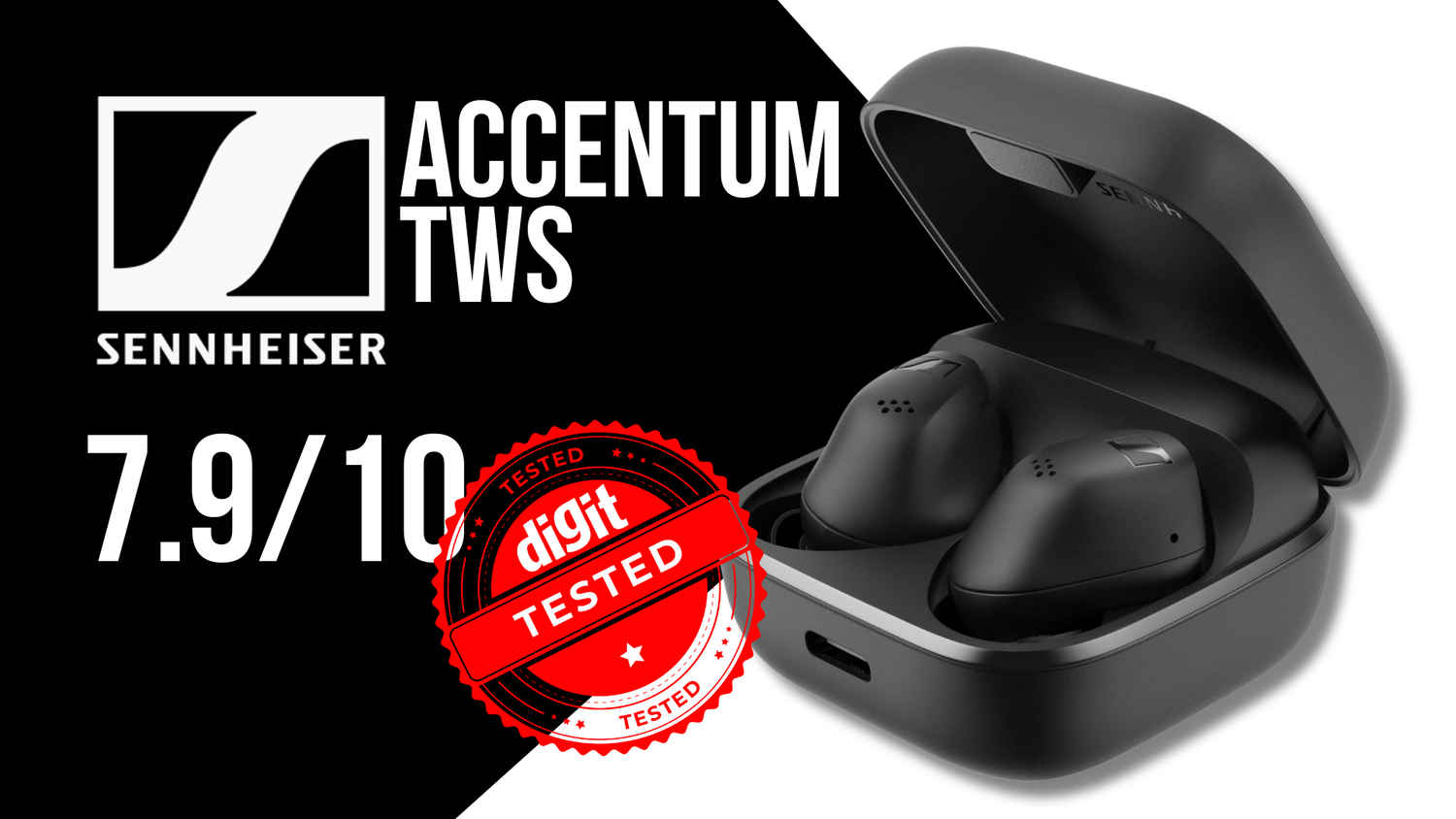
- Great connectivity over Bluetooth
- Hi-Res CODEC support
- ANC is great for the price
- Lacklustre feature set
- Overall package pales in comparison to competitors
This was the most tricky part for me when writing with these earbuds. The Sennheiser Accentum TWS in-ear earphones hold the Sennheiser legacy well and also hold their own when you factor in the fact that they are a part of the brand’s more pocket-friendly yet taxing Accentum lineup, whose headphones set the bar really high. These TWS in-ear earphones sound great and come with a robust set of features and great build and design. All these shine like a beacon in the sky of the TWS market only when you are just evaluating them in a vacuum.
Pit them against the likes of the Nothing Ear (2024) and the recently launched OnePlus Buds Pro 3, and the lack of a wider gamut of features and some other QOL inclusions starts to hurt and come to the surface. If you are looking for a pair of TWS in-ear earphones which would last you a lifetime as you maintain a low profile in the public when it comes to the design, and like the Sennheiser sound signature, with the sound being on the brighter side, you will be completely satisfied with Sennheiser Accentum TWS. However, if you want a cooler-looking pair of TWS, the obvious choice would be the Nothing Ear (2024), and if you are looking for a true flagship experience, turn to the OnePlus Buds Pro 3 or the slightly older offering, the Samsung Galaxy Buds Pro2.
The premium TWS market has expanded significantly in the last couple of years, with the delta between the performance and features of the in-ear earphones at the lower end of this price range being very small compared to the flagships of the world. Brands across the board are trying to be the flagship experience for the lower-end of the mid-range market by launching products that essentially pack the same hardware as their more premium counterparts, which translates to a premium experience for the user. Or, they are bringing the flagship features and performance to their more affordable offerings. The best example of this can be seen in the Sennheiser Accentum TWS in-ear earphones.
The Accentum line of audio products by Sennheiser started with the introduction of the Sennheiser Accentum Plus headphones in India. Later, we saw the launch of the regular Sennheiser Accentum cans, which were a little more diluted in terms of their features compared to the Accentum Plus. However, both these headphones brought a watered-down experience of the premium Momentum 4 Wireless headphones to the sub-₹15,000 price range. The headphones remain a solid offering in their price bracket and are praised by many but criticised by few, offering the experience of owning Sennheiser’s flagship over-ear wireless headphones on a budget.
Now, joining the Accentum Plus and Accneum headphones is the Accentum TWS. These in-ear earphones showed up at the Digit Test Centre some time ago, and when I got my hands on them for review, I wanted to see how they fared in their own price range and how the experience was when weighed against the expectations set by its other Accentum brethren. So, I put these in-ear earphones through the grinders of the Digit Testing process, and here’s what I found out –
Sennheiser Accnetum TWS have a basic design and durable build
Honestly, I am a fan of these in-ear earphones. As someone who isn’t pleased by in-ear earphones that lack a stem, the Sennheiser Accentum TWS really made me reconsider my choices. The fit was on point for me, and in our signature headshake test, devices by colleague Dhriti fared better than any other non-stem earbuds that I have tried in my time here. Of course, as always, your mileage may vary, given the shape of your ears. However, I sampled a small group of people, and all of them were satisfied with the fit of these in-ear earphones, albeit with different ear tips of different sizes.
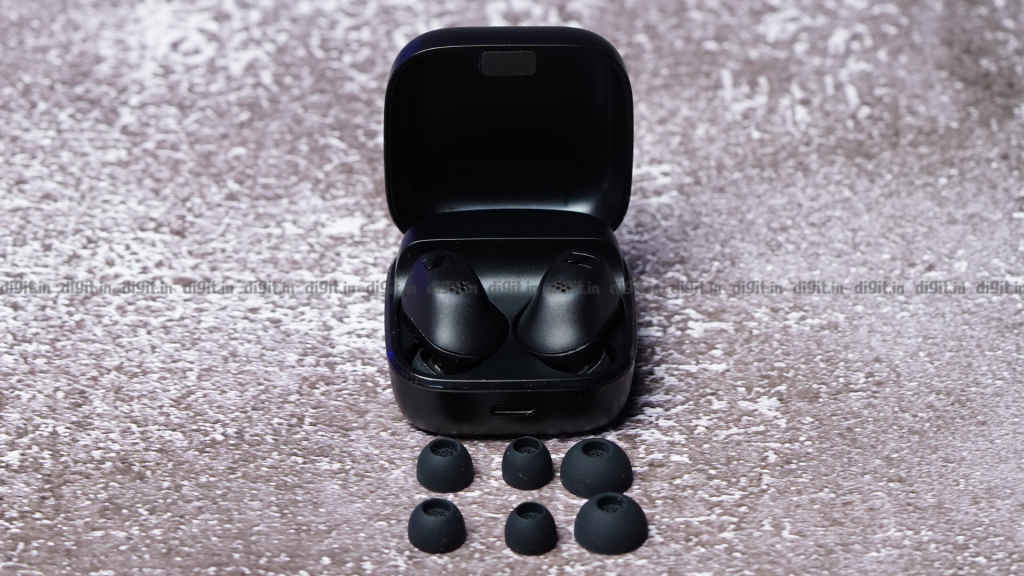
A mild word of caution for the folks with small ears. The buds are slightly larger, and you might experience some discomfort when wearing these in-ear earphones for longer periods of time. It is to be noted here that Sennheiser has made sure that no one is left out and has included four different pairs of silicon ear tips in the box. A big thumbs up here!
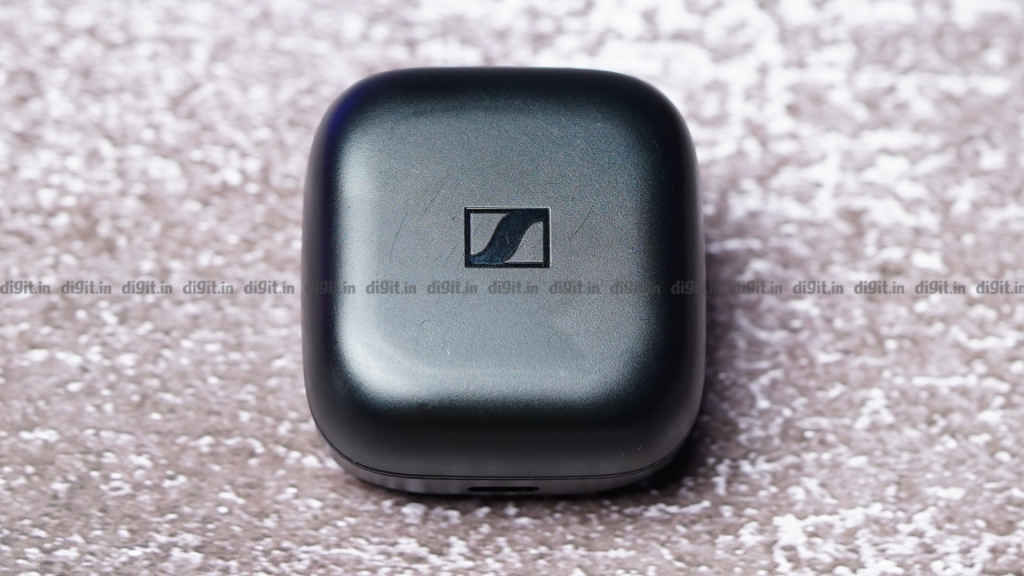
The case is also nice and pocketable, and given the battery it houses, which I will get to later, the size and the weight are pretty impressive. If you have read my reviews in the past, you would know that I am a sucker for a metallic hinge in the case of any TWS in-ear earphones. However, the plastic hinge on these earphones did not make me worried. I docked some brownie points here, though, but the overall fit of the case, the choice of materials and the heft impressed me.
Talking about the build quality of the case. The earbuds also have the same materials as the case, and the IP54 splash resistance means that they will fare well when exposed to the elements for a short period of time. For gymming, go ahead and sweat it out with these earphones on. In the rain, I would suggest exercising caution. And, in either of the scenarios, keep the case secure, as the IP rating is only for the earbuds.
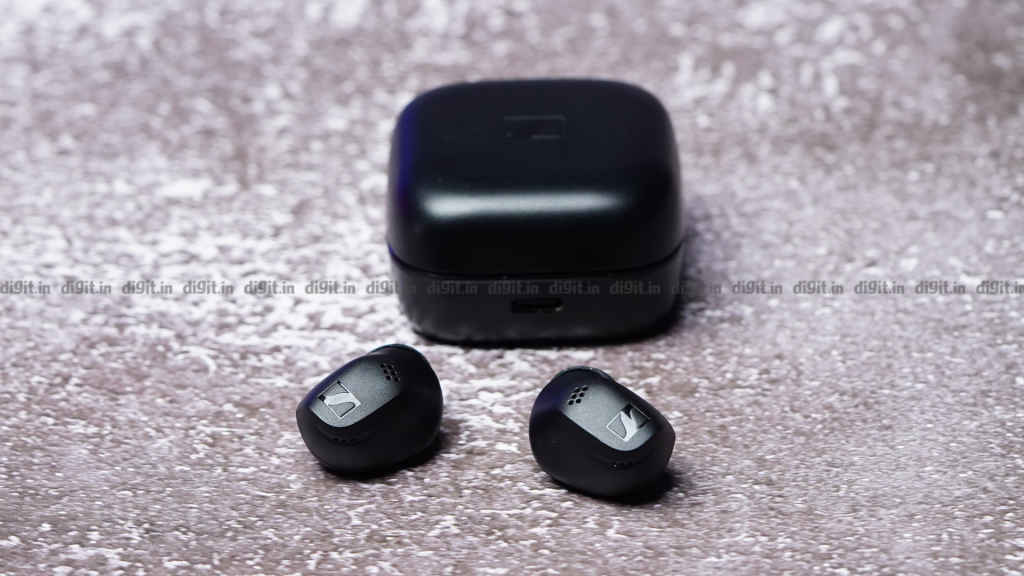
All in all, the build and design of the Sennheiser Accentum TWS are solid, and whatever ground they lost was in the form of brownie points, which I would have awarded if Sennheiser had included a metallic hinge on the case.
Features aren’t many, but well implemented on the Sennheiser Accentum TWS
When it comes to features, you can expect a similar set here to any other Sennheiser-branded pair of in-ear earphones. You have a solid set of features baked into the Sennheiser Smart Control app. They are limited but robust. Nothing to write home about. What is there, is sufficient for most. Here’s a quick overview of my thoughts about the features of the Sennheiser Accentum TWS –
| Feature | Intended Use | Bottomline |
| Noise-Free Zone | Set up geographical zones upon entering or exiting, and your in-ear earphones will automatically be configured to pre-determined settings. Settings that can be pre-assigned for up to 20 zones – Noise Control (ANC) and Equaliser. | Useful for folks using the in-ear earphones as a daily driver, are commuting to work, and do not want to pull out their phone every time they want to change the settings on their device. The setup process is also fairly intuitive. |
| ANC and Transparency Controls | As the name suggests, you can configure the ANC and Transparency level from inside the app. | Works well, and I know that it is a common thing in most premium offerings, but the Anti-wind mode in ANC is a much-appreciated inclusion here. More commentary on the ANC performance later in the review. |
| Equaliser | Change the sound settings of the in-ear earphones by configuring the levels of one of the five pre-configured frequency ranges. | Slightly disappointed with the five-band EQ. With brands that have a legacy of producing high-quality audio products, I expect an eight-band EQ. The only reason why they shied away from including more bands in their EQ is to avoid confusing the less-savvy consumer. However, they could have worked around this as some other brands have by including a basic and an advanced mode, with the former having fewer bands and steps of configuration for each band compared to the latter, which is decked out for the audiophiles of the world. |
| Connection Management | Manage what devices your in-ear earphones are paired to directly from the app. | Definitely nice to have. Helpful for folks like me who compare these device’s performance across multiple different sound sources. Also helpful in keeping bad actors at bay. |
| Sound Check | Registered users can configure a number of different presets to tune the sound signature of these earbuds to their liking. | Something that the audio enthusiasts and Sennheiser’s core audiophile consumers would definitely appreciate. However, I would like to see a better implementation where the brand includes personalised automated adjustments to the sound signature based on the shape of my ear canal, as we see implemented by some other brands. |
| Touch Control Customisation | Configure the actions of the earbuds based on the touch inputs. | The controls themselves are robust and work well without missing, and the level of customisation offered here definitely helped me personalise these earbuds to my liking. |
Performance is where the Sennheiser Accentum TWS shine the brightest, literally!
Coming to the biggest point of focus of this review, is the performance of the Sennheiser Accentum TWS. As you can see in the sound signature graph below, the sound signature of the Sennheiser Accentum TWs is fairly well-rounded. In true Sennheiser fashion, the sound coming from these earbuds is bright, and the bass is also in control, as the mids come fairly close to our baseline reading of the flat response recorded using pink noise. The upper-mids and the highs have a significant boost to them out of the box, which means that you will definitely enjoy listening to genres like rock and classical on these in-ear earphones.
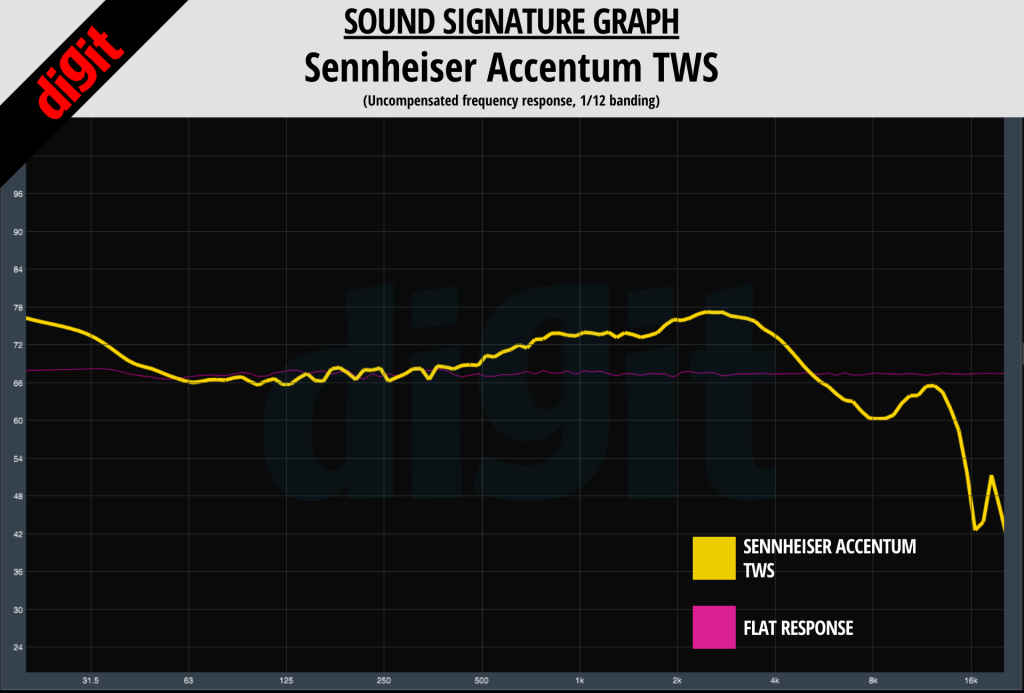
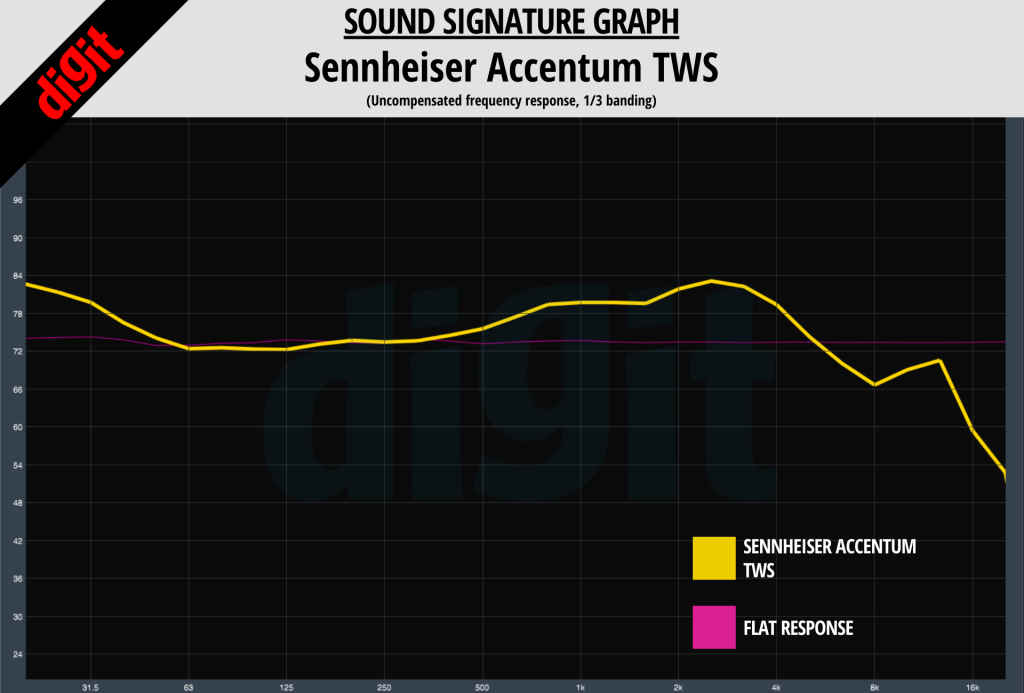
To see how they would fare in day-to-day use, I played through our playlist, which includes songs from across the genres, and I was pleasantly surprised to see how these in-ear earphones fared when I was listening to tracks like Rescue Me by One Republic and Selkies by BTBAM. The vocal reproduction and the metal instrument density were great on these in-ear earphones. Moving on to the staging and the overall detailing of the sound produced by these in-ear earphones.
The details are well represented across genres, with songs like Uptown Funk by Bruno Mars packing an ample amount of punchy bass and more vocal forward, and metal instrument-heavy music from bands like Linkin Park also sounds pleasant. Additionally, you can tune these earbuds to your liking, and the mechanism that Sennheiser uses involves you playing your favourite track and then tuning the earbuds, making sure that you get the sound that you will actually love over the period of time. The staging is fairly expansive, and it added to the overall immersion when I was watching movies and content that utilises the grandeur added by sound design.
If you are wondering how is the sound signature of these in-ear earphones against similarly priced TWS in-ear earphones offered by other brands, here’s a quick look at the sound signature graphs that will give you a quick idea of how they fared –
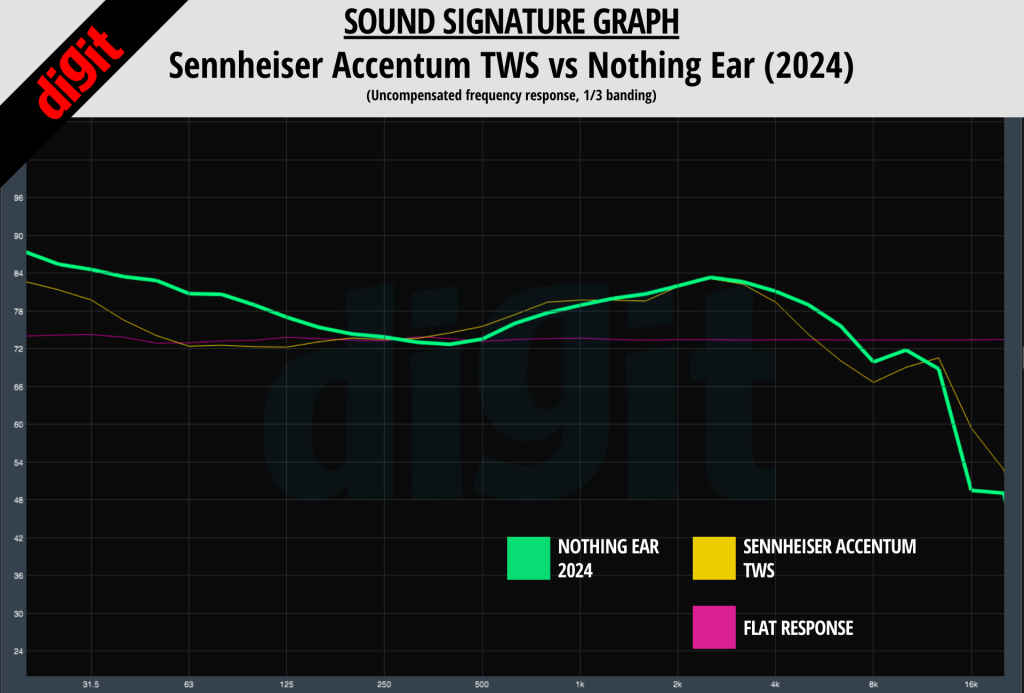
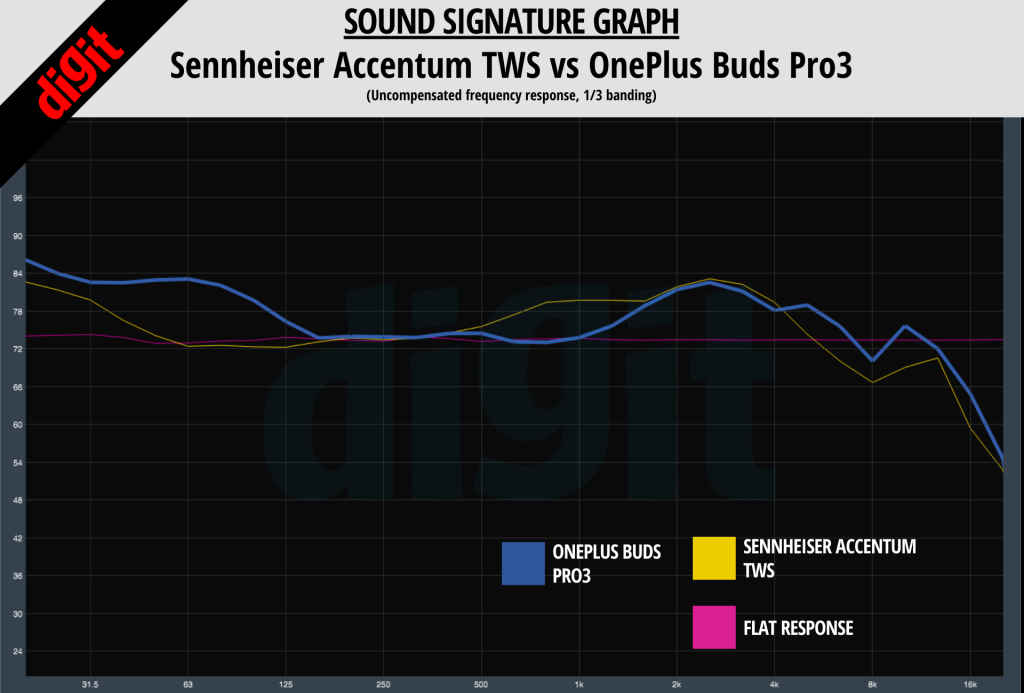
Active Noise Cancellation
As for the ANC, it is definitely serviceable in most conditions. The earbuds do a great job when working with low-pitched sounds and also tackle high-pitched noises well! If you are rocking these on your next flight, then you will definitely be least bothered by a crying child on board if it is 4-5 rows away from you; any closer, and you will have a fair amount of the noise seeping through. The low-pitched drone of the engine will be drowned out completely. In day-to-day use, while commuting, these earbuds will hold their own.
Microphone Performance
The microphone on these earphones will not blow your mind, but if you are in a noisy office, you will not get any complaints from the receiver of your calls either. Sennheiser’s prowess in making quality audio products shines through here, as the mic on these in-ear earphones left my voice un-altered for the most part while trying to work around the background noise coming in. Here’s a sample that will help you understand their performance in office environment better –
Note: The voice recording sample was recorded at the time of writing, and a different sample was used to evaluate the earbuds. This sample will soon be replaced, and the change will be noted here. The observations made here are based on the test sample, which is different compared to the one embedded here.
Battery Life – Good enough in isolation
The battery life of the Sennheiser Accentum TWS, especially after considering how light the earbuds are and the pocketability of the case, is pretty impressive when you keep them in isolation. The total battery life of the earbuds, including the case, when the volume was set to 50 per cent, and ANC turned on, came out to be 19 hours in total, which equates to about 4.5 hours on the buds themselves. It seems pretty good for a pair of lightweight and pocketable earbuds. However, when compared to the likes of the OnePlus Buds Pro 3, which clocked in 25.5 hours total in our testing, the Sennheiser Accentum TWS leave something to be desired.
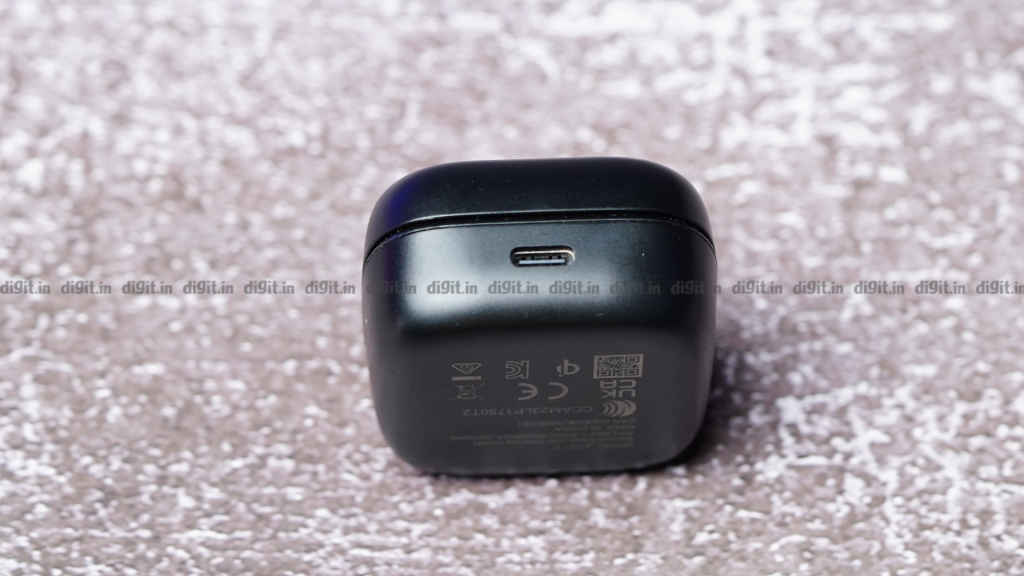
You get a USB-C port on the back of these earbuds, which you can use to charge these earbuds, with the brand claiming that the fast-charging tech on these earbuds gives you around 1 hour of playback in just 10 minutes of charge. A quality-of-life feature that I really appreciate on these earbuds is the inclusion of Qi wireless charging, which saved me the brain space of remembering that I needed to charge the earbuds. I would just come home at the end of the day and plonk them onto my wireless charger and breeze through the day.
Should you buy the Sennheiser Accentum TWS?
This was the most tricky part for me when writing with these earbuds. The Sennheiser Accentum TWS in-ear earphones hold the Sennheiser legacy well and also hold their own when you factor in the fact that they are a part of the brand’s more pocket-friendly yet taxing Accentum lineup, whose headphones set the bar really high. These TWS in-ear earphones sound great and come with a robust set of features and great build and design. All these shine like a beacon in the sky of the TWS market only when you are just evaluating them in a vacuum.
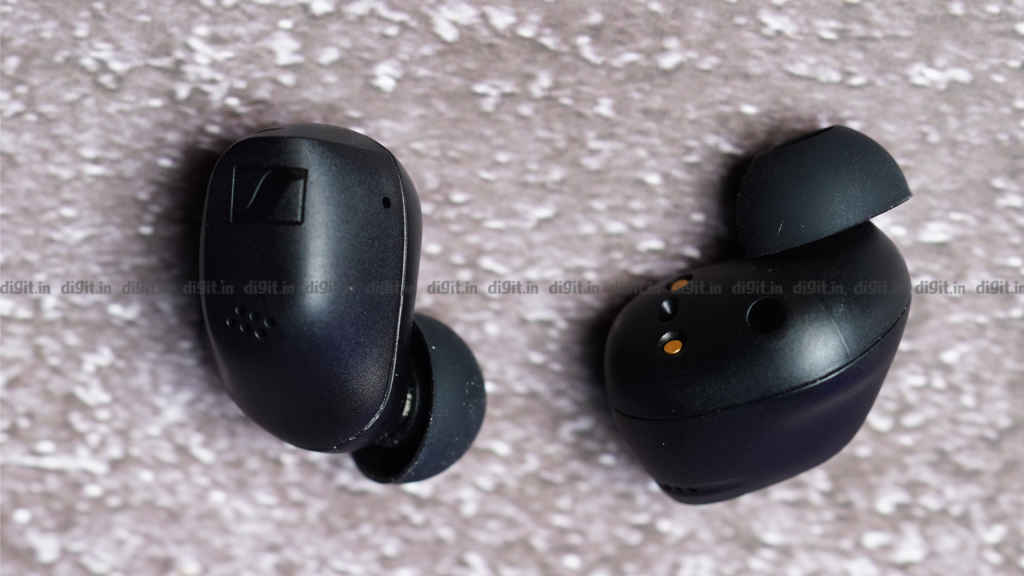
Pit them against the likes of the Nothing Ear (2024) and the recently launched OnePlus Buds Pro 3, and the lack of a wider gamut of features and some other QOL inclusions starts to hurt and come to the surface. If you are looking for a pair of TWS in-ear earphones which would last you a lifetime as you maintain a low profile in the public when it comes to the design, and like the Sennheiser sound signature, with the sound being on the brighter side, you will be completely satisfied with Sennheiser Accentum TWS. However, if you want a cooler-looking pair of TWS, the obvious choice would be the Nothing Ear (2024), and if you are looking for a true flagship experience, turn to the OnePlus Buds Pro 3 or the slightly older offering, the Samsung Galaxy Buds Pro2.
Sennheiser Accentum True Wireless Key Specs, Price and Launch Date
| Release Date: | |
| Market Status: | Launched |
Key Specifications
Playback time
20 hours
Satvik Pandey
Satvik Pandey, is a self-professed Steve Jobs (not Apple) fanboy, a science & tech writer, and a sports addict. At Digit, he works as a Deputy Features Editor, and manages the daily functioning of the magazine. He also reviews audio-products (speakers, headphones, soundbars, etc.), smartwatches, projectors, and everything else that he can get his hands on. A media and communications graduate, Satvik is also an avid shutterbug, and when he's not working or gaming, he can be found fiddling with any camera he can get his hands on and helping produce videos – which means he spends an awful amount of time in our studio. His game of choice is Counter-Strike, and he's still attempting to turn pro. He can talk your ear off about the game, and we'd strongly advise you to steer clear of the topic unless you too are a CS junkie. View Full Profile

